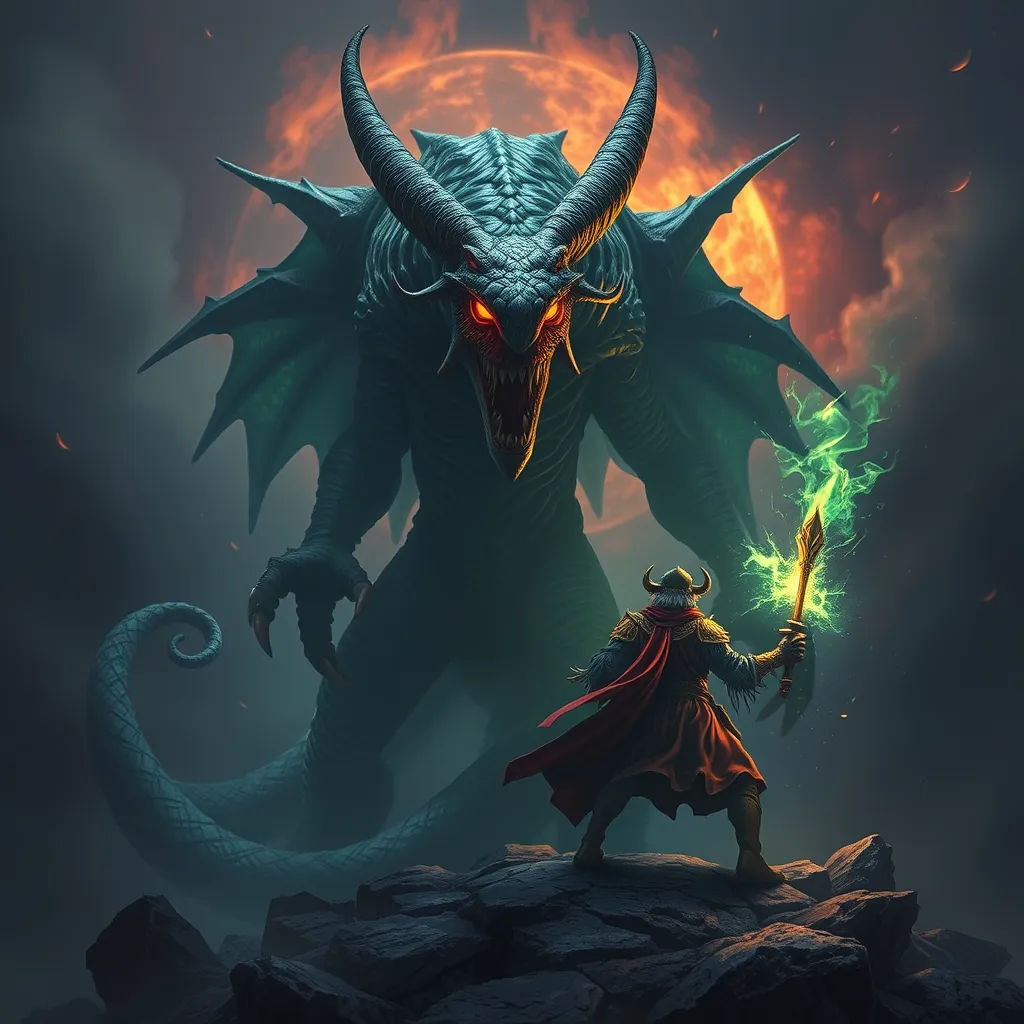The Kelpie and the Child: Understanding the Myth’s Role in Children’s Stories and Folklore
I. Introduction
The Kelpie is a fascinating figure in Scottish mythology, often depicted as a water spirit or shape-shifting horse that resides in lochs and rivers. This mythical creature has captured the imaginations of children and adults alike, serving as both a symbol of the beauty and danger of nature. Folklore, including the story of the Kelpie, plays a significant role in children’s literature, providing not only entertainment but also valuable lessons and cultural insights.
The purpose of this article is to explore the Kelpie’s role in children’s stories and its broader implications in folklore. By understanding this myth, we can appreciate how it contributes to the moral and educational framework within which children learn about the world.
II. The Kelpie: Origins and Characteristics
A. Historical background of the Kelpie myth
Originating from Scottish folklore, the Kelpie has been a part of the cultural landscape for centuries. Historical records suggest that tales of the Kelpie date back to the early 19th century, although the roots of the myth likely extend further into the past. Traditionally, the Kelpie was seen as a malevolent force, luring unsuspecting travelers to watery graves.
B. Description of the Kelpie: appearance and behavior
The Kelpie is often described as a beautiful horse, with a sleek coat that shines in the sunlight. However, beneath this alluring exterior lies a treacherous nature. The Kelpie is known to transform into a human form, often appearing as a handsome young man to entice children and adults alike. Once a victim is close enough, the Kelpie reveals its true form, dragging them into the depths of the water.
C. Symbolism of the Kelpie in Scottish folklore
In Scottish folklore, the Kelpie symbolizes the duality of nature—its beauty and its peril. The creature personifies the unpredictable forces of water, reminding us of the respect that must be afforded to natural elements. As a mythological figure, the Kelpie serves as a warning against hubris and the dangers of temptation.
III. The Kelpie in Children’s Literature
A. Examination of notable children’s books featuring the Kelpie
Various children’s books feature the Kelpie, illustrating its role in storytelling. Notable titles include:
- The Kelpie’s Curse by Emma Wright
- The Water Horse by Dick King-Smith
- The Secret of the Kelpie by Laura McKenzie
B. Themes and messages conveyed through these stories
These stories often explore themes of adventure, caution, and the importance of listening to warnings. Through the lens of the Kelpie, authors convey messages about the allure of danger and the importance of making wise choices.
C. The Kelpie as a character: antagonist or protector?
In children’s literature, the Kelpie can serve as both an antagonist and a protector. While it often embodies the role of a trickster or villain, some stories reimagine the Kelpie as a guardian of the water, protecting nature and teaching respect for the environment.
IV. The Role of Folklore in Child Development
A. Psychological benefits of folklore for children
Folklore, including the Kelpie myth, offers psychological benefits for children. Engaging with these stories allows children to explore complex emotions and moral dilemmas in a safe context. It fosters imagination and encourages critical thinking as children analyze characters and their motivations.
B. Moral lessons and cautionary tales found in Kelpie stories
Kelpie tales often contain moral lessons about the consequences of curiosity and disobedience. Children learn to recognize the signs of danger and the importance of heeding warnings, which can translate into real-life decision-making skills.
C. Folklore as a tool for cultural education
Folklore serves as a valuable resource for cultural education. Through stories like those of the Kelpie, children gain insight into Scottish culture, history, and values, fostering a sense of identity and belonging.
V. The Kelpie as a Cautionary Figure
A. The Kelpie’s role in teaching children about danger
The Kelpie’s narrative is steeped in cautionary elements, teaching children about the potential dangers of the world. These stories emphasize the importance of being aware of one’s surroundings and the risks associated with unfamiliar situations.
B. Analysis of specific tales where the Kelpie serves as a warning
In many tales, the Kelpie lures children to the water’s edge with promises of fun and adventure, only to reveal its true nature once they are ensnared. Such narratives serve as powerful reminders of the need for vigilance and the reality of deception.
C. Comparison with other folklore figures in cautionary tales
Similar to figures like the Boogeyman or the Wendigo, the Kelpie embodies the fears associated with the unknown. These characters serve as cautionary figures, warning children of the consequences of straying too far from safety.
VI. Contemporary Interpretations of the Kelpie
A. Modern retellings and adaptations of the Kelpie myth
In contemporary literature and media, the Kelpie myth has been reinterpreted in various ways. Authors and filmmakers have adapted the story to fit modern themes, often emphasizing the environmental aspects of the Kelpie’s character.
B. The impact of contemporary culture on the perception of the Kelpie
Modern audiences may view the Kelpie through a more sympathetic lens, focusing on its role as a guardian of nature rather than merely a malevolent force. This shift reflects broader cultural changes in how we relate to the environment.
C. The Kelpie in movies, television, and digital media
The Kelpie has found its way into various forms of media, including animated films and television series, where it is often depicted as a protector of water bodies. These representations contribute to the myth’s evolution and ongoing relevance in popular culture.
VII. The Kelpie’s Influence on Global Folklore
A. Similar water spirits in other cultures and their roles in children’s stories
Many cultures have their own water spirits that share similarities with the Kelpie. For instance:
- The Nuckelavee in Orcadian folklore
- The Selkie from Scottish and Irish mythology
- The Mami Wata in African traditions
B. The universality of the Kelpie’s themes across different societies
These water spirits often embody similar themes of danger, temptation, and the mysteries of nature, highlighting a universal human fascination with water and its associated risks. Such parallels reveal the common threads that run through various cultures’ storytelling traditions.
C. Lessons learned from cross-cultural comparisons of water spirit myths
By comparing the Kelpie with similar figures in other cultures, we can gain insights into the values and fears that societies project onto these mythic beings. These comparisons enrich our understanding of human psychology and cultural narratives.
VIII. Conclusion
The Kelpie holds a significant place in children’s folklore, serving as both a cautionary figure and a symbol of the beauty and danger of natural elements. Its enduring legacy in modern storytelling underscores the importance of myths in shaping childhood narratives. As we continue to explore and reinterpret these tales, we recognize the vital role of folklore in imparting wisdom, fostering imagination, and promoting cultural understanding among children.
In conclusion, the Kelpie is more than just a mythical creature; it is a crucial element of storytelling that helps children navigate the complexities of the world around them. The lessons derived from these stories will resonate through generations, reminding us of the importance of respecting nature and understanding the consequences of our choices.



